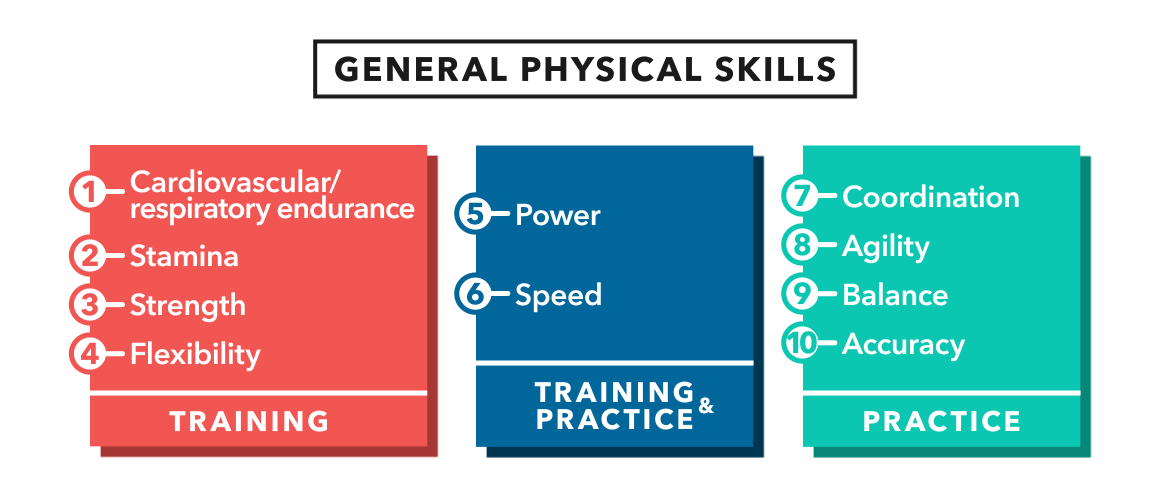General Physical Preparedness (GPP)
04/04/2022 # Training

What is General Physical Preparedness?
It is about preparing yourself for the unknown and the unknowable life throws at you. It can be anything, for example, you are late for boarding your flight and you have to just run with your bag and suitcase. It’s carrying those bags in both hands filled with groceries from your parking lot. It’s climbing those 10 floors because your building’s lift is not working.
You have already been doing these things but the point we are trying to make here is, what if you can do these things 4 times more efficiently and safely without any pain and injury?
There are 10 recognized general physical skills. They are cardiovascular/respiratory endurance, stamina, strength, flexibility, power, speed, coordination, agility, balance, and accuracy.
You are as fit as you are competent in each of these 10 skills. A regimen develops fitness to the extent that it improves each of these 10 skills.
Importantly, improvements in endurance, stamina, strength, and flexibility come about through training. Training refers to an activity that improves performance through a measurable organic change in the body. By contrast improvements in coordination, agility, balance, and accuracy come about through practice. Practice refers to activity
that improves performance through changes in the nervous system. Power and speed are adaptations of both training and practice.
If your goal is optimum physical competence, then all the general physical skills must be considered:
1. Cardiovascular/respiratory endurance—The ability of body systems to gather, process, and deliver oxygen.
2. Stamina—The ability of body systems to process, deliver, store, and utilize energy.
3. Strength—The ability of a muscular unit, or combination of muscular units, to apply force.
4. Flexibility—The ability to maximize the range of motion at a given joint.
5. Power—The ability of a muscular unit, or combination of muscular units, to apply maximum force in minimum time.
6. Speed—The ability to minimize the time cycle of a repeated movement.
7. Coordination—The ability to combine several distinct movement patterns into a singular distinct movement.
8. Agility—The ability to minimize transition time from one movement pattern to another.
9. Balance—The ability to control the placement of the body’s center of gravity in relation to its support base.
10. Accuracy—The ability to control movement in a given direction or at a given intensity.
Now that you have just learned about 10 general physical skills, here is how you can apply those by combining with good eating habits:
1. Eat meat, plant proteins and vegetables, nuts and seeds, some fruit, little starch, and no sugar. Keep intake to levels that will support exercise but not body fat.
2. Practice and train major lifts: Deadlift, clean, squat, presses, C&J (clean and jerk), and snatch. Similarly, master the basics of gymnastics: pull-ups, dips, rope climbs, push-ups, sit-ups, presses to handstands, pirouettes, flips, splits and holds. Bike, run, swim, row, etc. hard and fast.
Five or six days per week mix these elements in as many combinations and patterns as creativity will allow. Routine is the enemy. Learn the movement mechanics first then learn to maintain the consistency and then keep workouts short and intense.
Reference:
